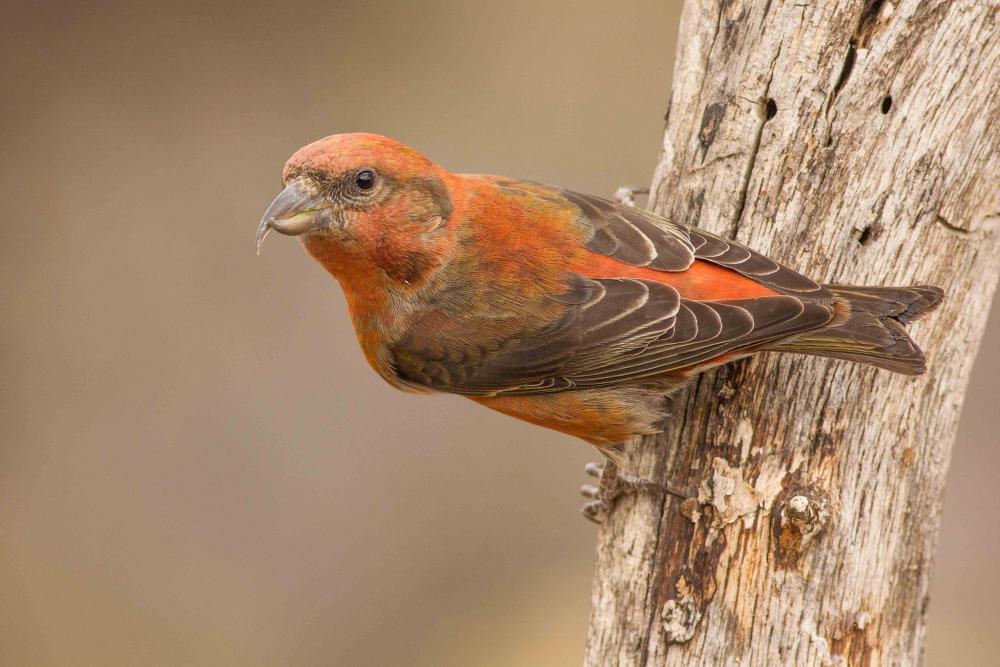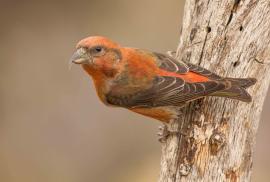Guide to Boreal Birds
Overview
The crossed mandibles of the bill of these unusual birds are specialized for opening pine cones. Holding the cone with one foot, the bird inserts its closed bill between the cone and the scales, pries the scales apart by opening its bill, and extracts the seed with its flexible tongue. Because of its dependence on pine seeds, the Red Crossbill is an erratic and nomadic species appearing in large numbers, then not appearing for several years. When the cone supply fails, these birds gather in flocks and may wander far from their normal haunts. They may breed almost anywhere, and, because their chosen food is available in winter, they commonly begin nesting as early as January, but have been found nesting in every month of the year.
Description
5 1/4-6 1/2" (13-17 cm). Sparrow-sized. Mandibles crossed at tips. Male dusky brick red. Female gray tinged with dull green, brightest on rump. White-winged Crossbill has 2 white wing bars.
Voice
Song chipa-chipa-chipa, chee-chee-chee-chee; also a sharp kip-kip-kip.
Nesting
3 or 4 pale blue-green eggs, lightly spotted with brown, in a shallow saucer of bark strips, grass, and roots lined with moss and plant down, placed near the end of a conifer branch.
Habitat
Coniferous forests; visits ornamental evergreens in winter.
Range/Migration
Breeds from southern Alaska, Manitoba, Quebec, and Newfoundland, south in West to northern Nicaragua, in eastern United States to Wisconsin and North Carolina (mountains). Winters irregularly south to Gulf Coast. Also in Eurasia.



